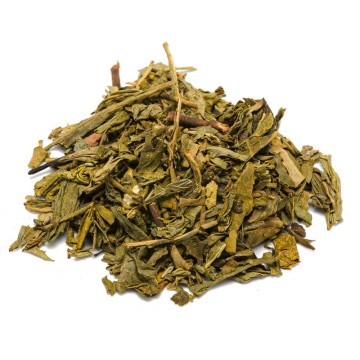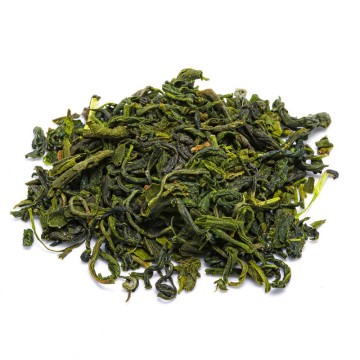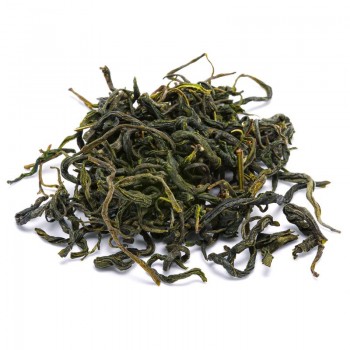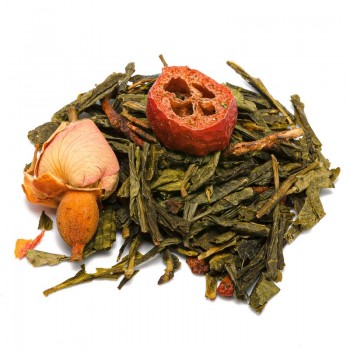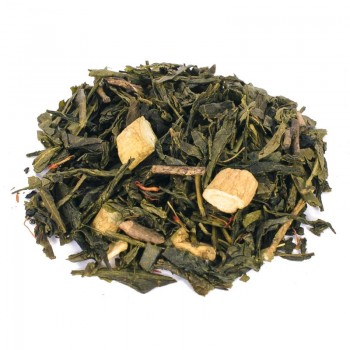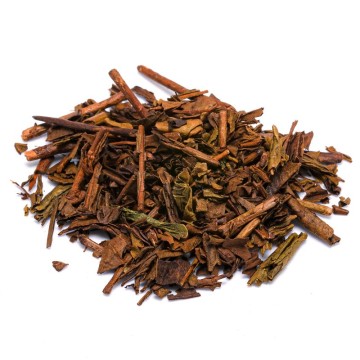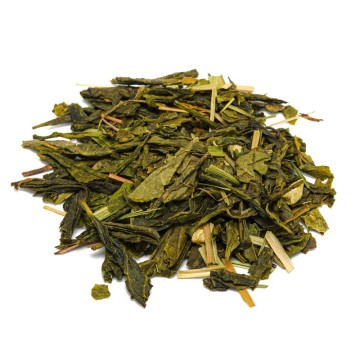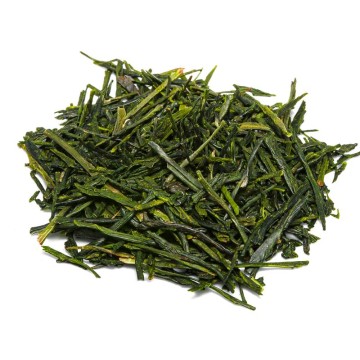Green Tea Hemp and Mango
This tea combines the fruity taste of mango flakes with soft green tea and hemp leaves with herbaceous nuances. It is enriched with notes of carrot and sweet blackberry leaves, for a pleasant taste to sip both hot and cold.
It can become a refreshing tea with a tropical scent in summer, or enveloping in fruity and intense aromas in winter. The green tea base is a delicate background, and helps the properties of this infusion.
Properties and benefits
Green tea is considered valid for our well-being due to the high content of tannins, flavonoids and Vitamin C. A high antioxidant potential, which joins the qualities known for millennia, as a tonic drink against tiredness, stress and fatigue. This hemp and mango green tea can give us useful active ingredients, thanks to the presence of three different ingredients. Some qualities of green tea are enhanced by the presence of mango, as regards the ability to quench thirst and provide the body with vitamins and mineral salts.
Thanks to the high levels of vitamins A, B and C, the components of mango and tea are able to support the metabolism and the immune system. Vitamin C and vitamin A represent potential antioxidants in this infusion, which together with other phytonutrients can also promote well-being against oxidative stress of the cells. Mangiferin, the main polyphenol found in mangoes, is another antioxidant useful in the fight against free radicals, which cause cellular damage.
Mango and green tea offer benefits for our well-being, such as the ability to improve digestion and intestinal transit, reducing the risk of constipation or indigestion.
This moisturizing tea can also provide benefits for stomach pain, relieving swelling after meals. The element of hemp makes available the substance of CBD, natural relaxant and antioxidant, as well as various flavonoids that help properties against digestive irritations. The virtues of hemp are combined with those of green tea to counteract stress by balancing the stimulating theine with the soothing CBD. The blend of hemp, green tea and mango infusion therefore has various natural elements that help the digestive system and the well-being of the nervous system.
Origins and History of cultivation
The green tea that is so popular around the world today was actually only consumed by Asian elites for centuries. It comes from the Camellia sinensis plant, and is distinguished from other teas for its processing. The drying cycle determines the color of the tea, and the green one is so because it shows a shorter drying period to avoid oxidation. This quick process ensures they keep their green colour.
According to Chinese tradition, the tea leaves are dried, and when the humidity evaporates, they are heated for cooking and curling. In Japan, for example, people like to skip the withering process and immediately move on to oxidation, by heating the tea leaves as soon as possible after harvesting.
The heating methods vary according to the techniques and of the regions (in China it is roasted in a pan, in Japan with steam cooking). The last step is to roll the tea leaves by hand to remove excess water or sap. A process that defines the different types of tea. Tea has been widespread since ancient times in Asian countries such as China, Japan and India, but the particular green tea has only become available to all levels of society in recent centuries. If the infusion was known as early as 2700 BC, it was only in the 14th century that green tea spread among all the Chinese. Its taste and medicinal qualities were appreciated, also handed down with the arrival of green tea in Europe in the 16th century, and then in America. To date, green tea is highly appreciated and consumed all over the world.
Hemp is a plant that has been cultivated for over 10,000 years, one of the oldest known and exploited by man in various fields - both as food and for the creation of textile fibres. It comes from the Cannabis sativa plant native to Central Asia, and today we know of archaeological remains in China and in ancient Mesopotamia, where evidence of its use has been found. It has also been used therapeutically by traditional Chinese medicine, as well as for some religious ceremonies. TCM has used hemp infusions and extracts to relieve muscle and joint pain, as well as for gastrointestinal well-being.
The parts usedfor therapeutic purposes were the leaves, flowers and seeds. Since ancient times and even in recent times hemp ropes were famous, especially for the nautical sector, and the plant was used as a material for raw fabrics. Today hemp is also used to create detergents and cosmetics. The fruity and exotic mango infusion is obtained from the leaves of the Mangifera indica tree. There are dozens of varieties of mango, a plant typically found in tropical areas in Asia, Southeast Asia and parts of the Indian subcontinent. In many countries, the fruit and the infusion are useful for the population to obtain excellent nutrients, minerals, essential vitamins and antioxidants.
This fruit is highly appreciated for its delicious taste, and for centuries it has been one of the fruits linked to the Hindu religious culture. In Indian legends, a mango tree, sacred to the Hindus, often appears. The leaves were used to embellish banquets and weddings, or to create garlands to decorate temples. The mango spread to East Asia and then later to Africa in the 10th century, through Arab merchants. It also soon arrived in Europe, where it was called "manga" from the Indian Tamil maangai. Through the Portuguese, the mango tree arrived in South America in the 17th century. Today the mango is cultivated in many tropical and subtropical countries, in Italy it is cultivated in Sicily and is also highly appreciated for its ease of conservation.
Plant and flowers
The components of tea are different, and the blend contains leaves and ingredients from different sources. We propose an infusion with green tea, mango flakes, hemp leaves, grated carrot, sweet blackberry and safflower leaves. Hemp comes from the Cannabis sativa plant of the Cannabaceae family. Also referred to as industrial hemp, it has been grown for millennia for its fiber and edible seeds. It tends to grow around 2 meters tall, with a potential of up to 6 meters, with long narrow leaves and branches all along the plant. The buds have a fruity, sometimes sweet scent. Cannabis sativa takes 9 to 12 weeks for a first harvest. Hemp should not be confused with cannabis plants, which belong to the same family but contain a higher THC content (very low in hemp). The mango plant is the Mangifera Indica, an evergreen with branches and resinous bark. The leaves of the plant are pointed and glossy, the flowers pinkish-white or yellowish, and not all of them bear mango fruit. Fruits are quite few compared to flowers, and take three to six months to ripen, depending on the variety of Mangifera Indica. Mango as a fruit is usually large, reddish-yellow in color. The weight of the fruit can even exceed two kilos. Safflower flowers come from the highly branched annual plant Carthamus tinctorius. It belongs to the Asteraceae family. Also called zafferanone (because it is used as a substitute for saffron), it is native to arid environments with seasonal rains. The yellow-orange flowers are used for infusions and to produce cosmetics.
Nutritional values of Hemp and Mango Green Tea
This infusion contains different nutrients, being formed from different plants. Green tea makes vitamins (Vitamins A, B, C) and various flavonoid antioxidants, catechins and polyphenols available. Contains precious minerals (selenium, copper, zinc, fluorine, manganese, calcium), tannins and a low dose of theine (caffeine).
Hemp leaves contain proteins, fibers, and polyphenol antioxidants, in addition to fatty acids omega-3 and omega-6. They are also rich in iron, zinc, potassium, magnesium and phosphorus. The best known compound of hemp infusion is cannabidiol (CBD), together with chlorophyll and terpenoids (myrcene, limonene, linalool, etc.). Flaked mango adds extra doses of minerals like potassium, magnesium, copper, manganese, and phosphorus. Supports the tea with the content of vitamins of group B, vitamin E, C, K and beta-carotene precursor of vitamin A.
How to prepare Hemp and Mango Green Tea
The infusion is obtained by placing in a cup (250 ml), about 3-5 grams of the mixture of green tea with mango and hemp, in water at 80 °C. Let it steep for 2 to 3 minutes before drinking this green tea. Add honey or sugar as desired. Nutritional values of Hemp and Mango Green Tea
Concerning green tea, although consumed by millions of people every day, there are some potential effects due to the content of theine (caffeine), if taken in excessive doses. High amounts of green tea can cause headaches, palpitations, agitation, anxiety and sleeplessnessi. Furthermore, an excess of tea could affect the functioning of the thyroid gland or cause liver fatigue; for this reason, it is advisable to keep consumption at the recommended doses, and to consult a specialist doctor in case of chronic pathologies.
Hemp can induce side effects in excessive doses, such as extreme tiredness, apathy or anxiety. This infusion balances the stimuli of theine, therefore avoiding particular adverse effects, but it is necessary to respect the recommended quantities. Consult a specialist if you suffer from a chronic health condition of the nervous system, heart failure and take blood thinners. It is also possible to be allergic to the components of the infusion, so it is advisable to read its composition carefully. Excessive consumption can cause gastrointestinal irritation, nausea, diarrhea and bloating. This infusion is not recommended for pregnant or lactating women.

![green tea hemp mango [Natura d'Oriente] green tea hemp mango [Natura d'Oriente]](https://www.naturadoriente.com/3381-large_default/green-tea-hemp-and-mango.jpg)




![green tea hemp mango [Natura d'Oriente] green tea hemp mango [Natura d'Oriente]](https://www.naturadoriente.com/3381-home_default/green-tea-hemp-and-mango.jpg)




 No reward points for this product.
No reward points for this product.
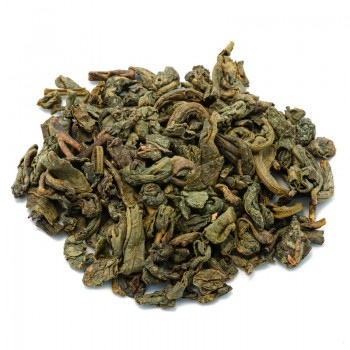
![green tea roasted almond [Natura d'Oriente]](https://www.naturadoriente.com/3366-home_default/green-tea-with-roasted-almonds.jpg)
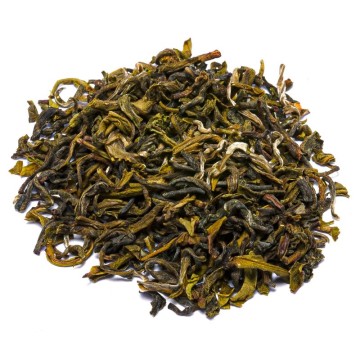
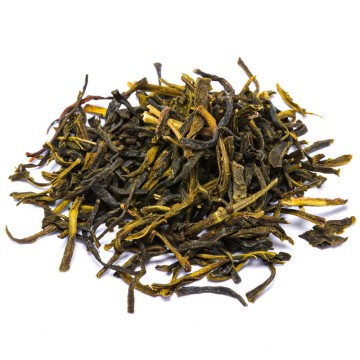

![Green Tea Choui Fong Tea [Natura d'Oriente]](https://www.naturadoriente.com/3379-home_default/green-tea-choui-fong-tea.jpg)
